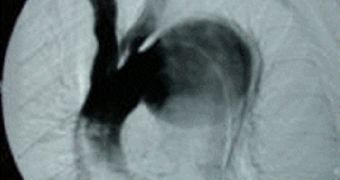By analyzing the genomes of some 10,000 patients – 2,000 who had developed aneurysms and approximately 8,000 healthy individuals – two Yale professors managed to identify three chromosomal segments, named loci, where variations in the make-up of various genes cause increased risks of sufferers developing ruptured aneurysms, which most of the times lead to strokes.
This discovery could result in the creation of new genetic screening options that could one day say if a person is likely to develop an aneurysm at one point in their lives and to what extent. There are numerous people living with unruptured aneurysms worldwide. Out of those people, some 500,000 are severely affected by this medical condition. Being able to determine which patients will develop the deadly form of the disease could give doctors an invaluable tool at counteracting it.
"Even though we have made significant strides in treating unruptured aneurysms, until now we have not had an effective means of identifying the majority of individuals at risk of developing this deadly problem. These genetic findings provide a starting point for changing that equation," explained Yale professor of neurosurgery and neurobiology, Murat Gunel, one of the two leaders of an international team, involved in the analysis of the test subjects.
The Netherlands, Finland and Japan provided the team with access to relevant medical data, so the scientists were able to conclude that the presence of specific genes in the loci was not influenced by the population group a certain individual belonged to.
"These findings provide fundamental insights into the genetic and biochemical changes that cause this devastating brain disease, providing hope that we may also be able to provide preventive therapy before rupture occurs," added Howard Hughes Medical Institute investigator, Richard Lifton, a Sterling Professor and chair of genetics at Yale University.
"These [genetic] variations may interfere with the ability to produce cells that repair damage to the blood vessels, suggesting a path forward for developing new approaches to prevention," concluded Gunel.

 14 DAY TRIAL //
14 DAY TRIAL //